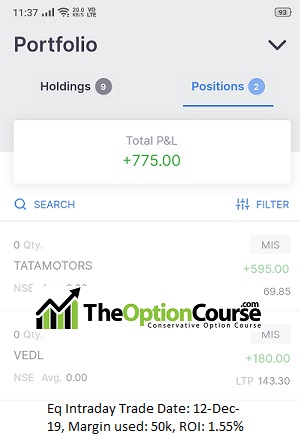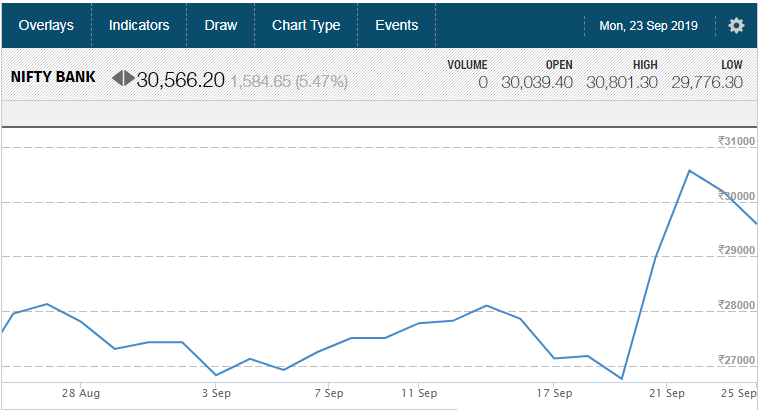Today morning I got a call from someone who bought Reliance (RIL) Call option a few days back because one of the WhatsApp group he was gave a buy call on Reliance. He bought options worth 37k, and when he called me he was in loss of 20k.
I asked him a few questions which I think you should also ask yourself when you make a trade:
1. What is the logic behind this trade or Why are you taking this trade?
Ans – The answer here is because the WhatsApp admin whom he does not know gave a call to buy RIL. It’s like blind following. Is he Warren Budget that you believed him?
Answer to this question should have stopped him taking the trade.
There are many Telegram and WhatsApp channels nowadays giving free calls – please exit from such groups for your safety.
2. What profit target have you kept and what is your stop loss?
Ans – Again he was unable to answer. You take a trade and you do not know what profit or loss you will take, then better do not take a trade.
I asked him to exit the position with 20k loss. At least he saved 17k. I am sure had he not called me, he would have waited and all his 37k would have gone down the drain. I am sure you are doing the same.
20k gone in just one trade. Is it really that easy to make 20k in your job? With 20k you can easily buy 43″ 4k Smart TV.
When you lose money in trading – compare it to what you could have bought with it. This will give you an idea of what you lost.
It will be painful but you must punish yourself for losses, else you will keep making it.
My Ans – When you buy an option call or put, keep your profit target at 20% ROI on the margin blocked and 10% stop loss on the margin blocked.
Let me take an example:
Let’s take example of the person who called me.
His invested amount: 37,000
He should have kept his profit target at: 37,000 + 20% = 44400. This is a profit of 7400.
He should have kept his stop loss at: 37,000 – 10% = 33300. This is a loss of 3700.
If you look at the example above this trader is risking 3700 to make 7400. Does that make sense?
In the example above 37,000 is just the invested amount where risk is 3700.
Please remember that STOP LOSS is the best Adjustment to a trade. There is no better adjustment than taking a stop loss. If you will try to take a losing position to a winning one by adjusting like buying/selling more options – you will fall more into debt. Plain and simple adjustment – just get out and wait for a better opportunity.
Those who follow the above rule survive for long – those who do not perish!
3. And the best question – Maybe you will make a profit of 4-5k in this trade but will you then take a trade of 37k+5k = 42k in his next call?
Ans – No. Because after winning the first trade from an advisory service provider, if your inner sense says this was a fluke – you will not be able to take a bigger trade in the next call. Then why trade his calls?
In stock trading, if you cannot compound a strategy with more money at least up to 10 lakh then that strategy is not a good strategy.
So next time you take a trade – ask yourself the above questions before putting money on the line. This will save you from a lot of losing trades.
Hope that helps.
This is one reason I do not give calls. If you want to learn and trade do not ask for calls – you will never learn. Remember that 2 or 3 calls can be a fluke and hit the target, but not 10.
That’s the reason tip providers give only 2 days free calls knowing very well that out of 5 days, 2 days will be great and they can get clients on those days. They work in the logic of Coin flipping – some days they know their calls will work and they can get clients. And they do get. It was a pure fluke. After this the client account starts moving towards the zero figure.
Let me tell you clearly that whatever you may try – that 10% a month target will NEVER be achieved. it will be like +10, then -20 kind of a journey that you must understand.
But I am sure its quite late now and you have lost a lot. Hope no more.
Do my course if you are ok with average 30-36% return a year (that’s 3% a month – not very great but reasonable), and this year after year, and yes you can compound because you will learn to hedge. In case of a bad day the hedge will act fast to protect your wealth and limit your loss.
Conservative Options Course based on Nifty Options – This course will help you to make a monthly income for years up to 3% a month. Fees and how to pay is here. Chek it out, no other teacher can give such a long support for such low fees for such results – Testimonials.
Bank Nifty Weekly Options Strategies – Results slightly better than Nifty. Fees and how to pay is here.
Looking forward to helping you to become a good trader.
































 Testimonial by a Technical Analyst an Expert Trader - Results may vary for users
Testimonial by a Technical Analyst an Expert Trader - Results may vary for users
 60% Profit Using Just Strategy 1 In A Financial Year – Results may vary for users
60% Profit Using Just Strategy 1 In A Financial Year – Results may vary for users

 Testimonial by Housewife Trader - Results may vary for users
Testimonial by Housewife Trader - Results may vary for users